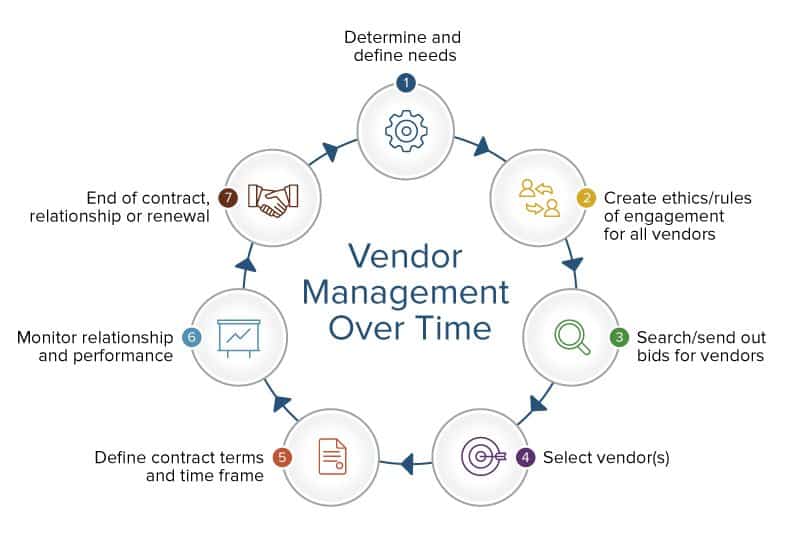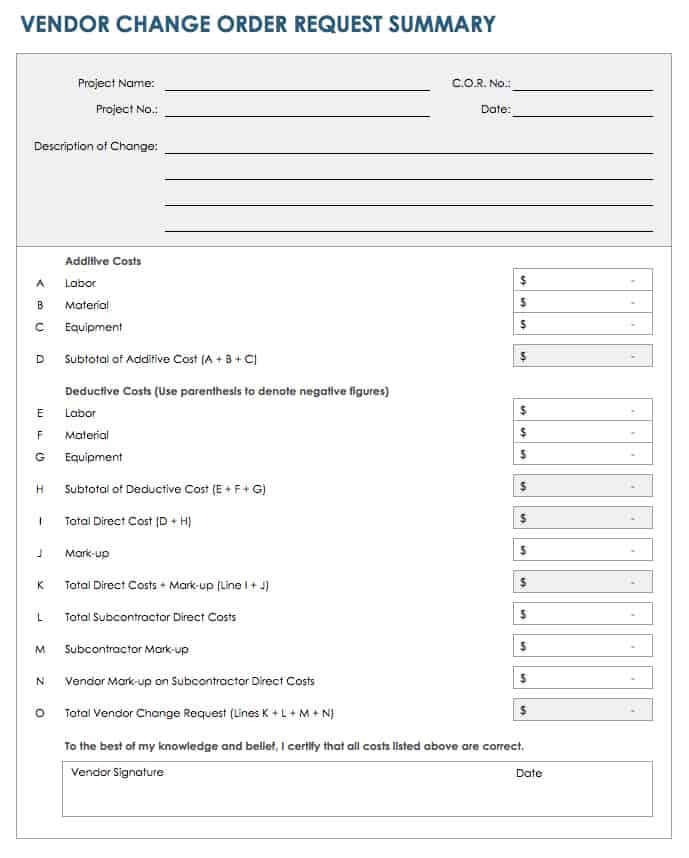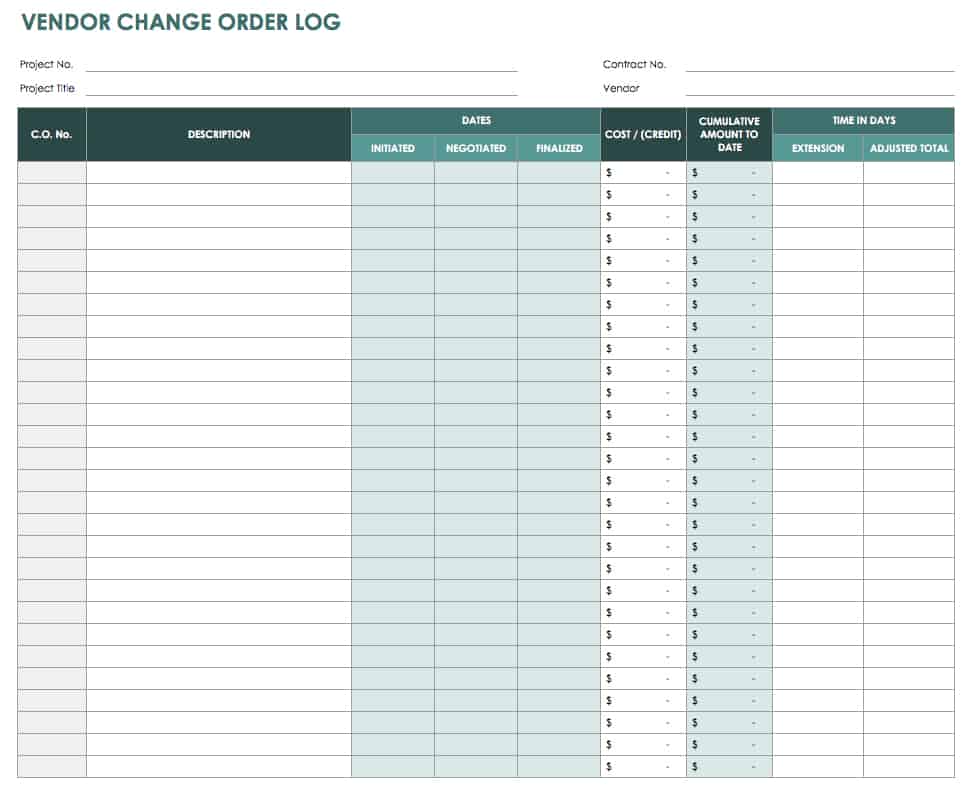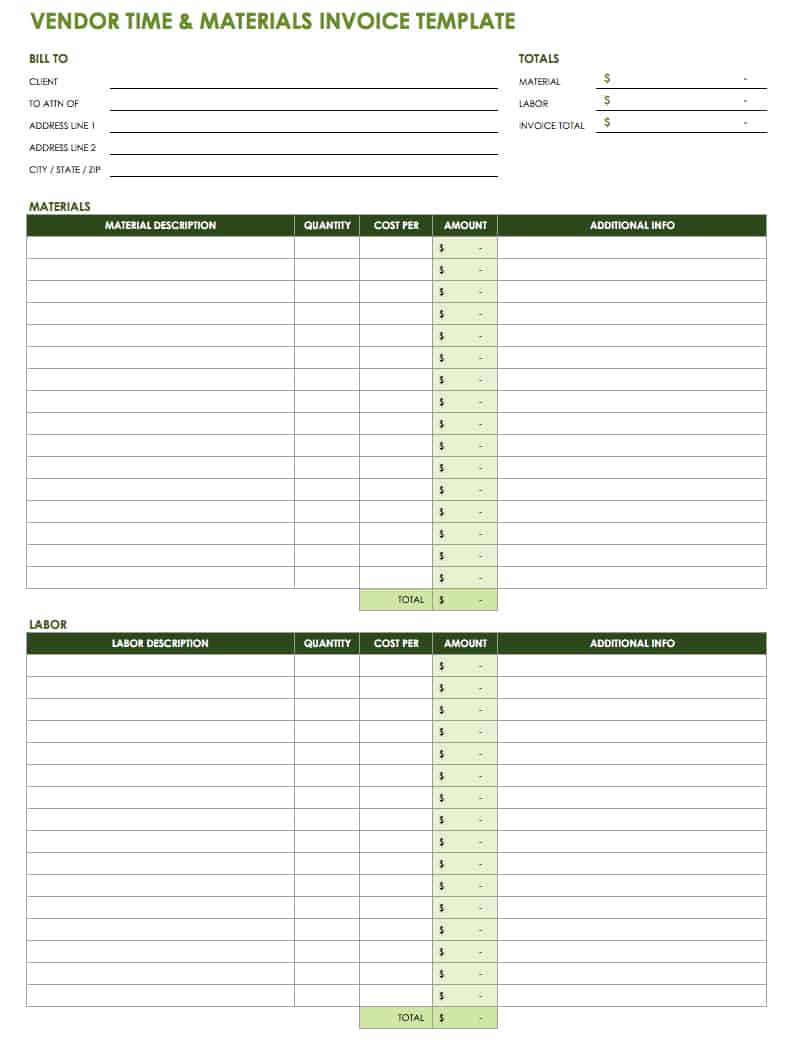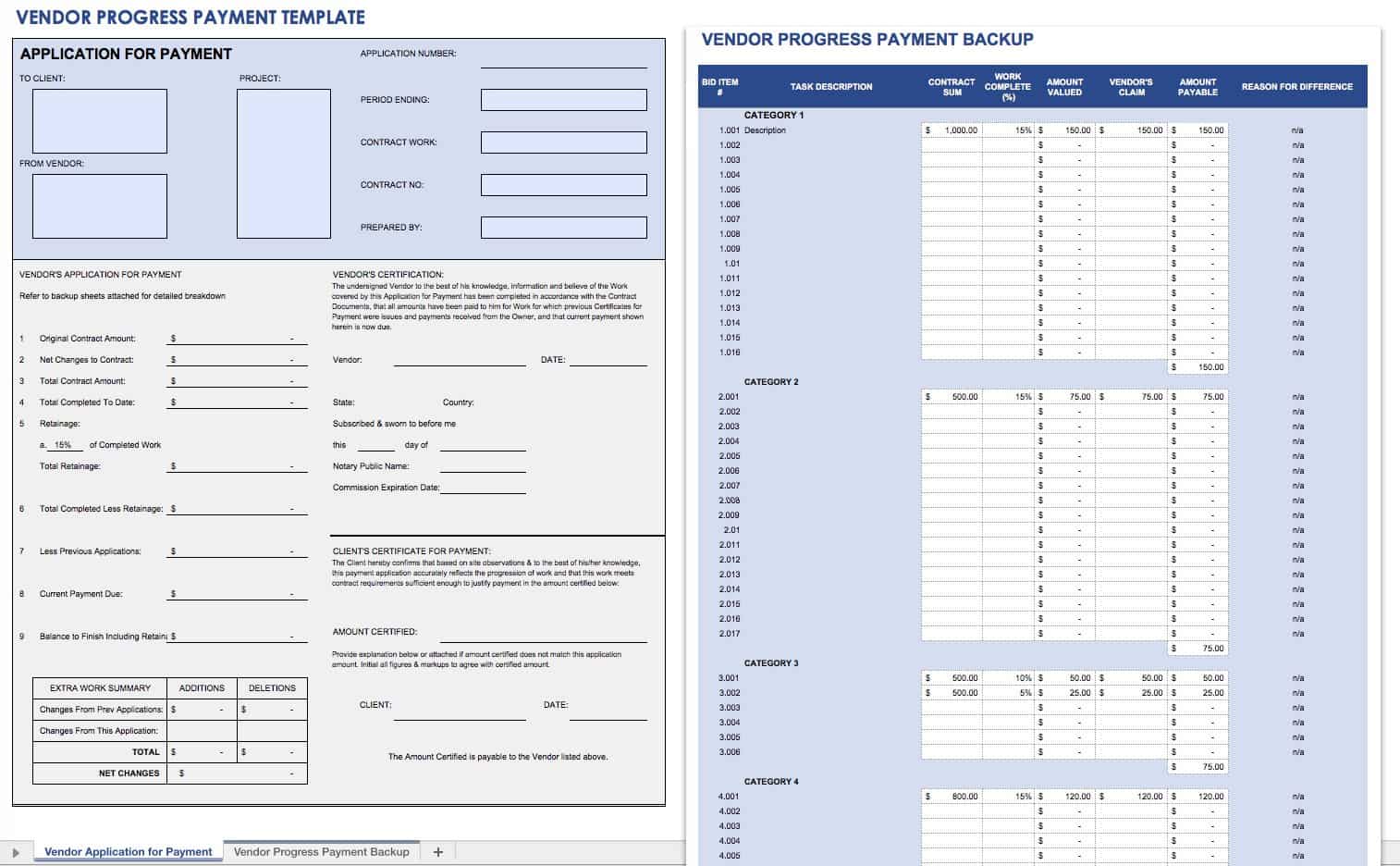Definitions: What Is Vendor Management and Vendor Relationship Management?
Before we dive more deeply into selecting and managing vendors, it’s important to understand who or what a vendor is in the context of business projects and goals. Vendors can provide a small, one-time need for a single project, or can be an ongoing business partner. Some examples of vendors are:
- A seller in the supply chain of a specific piece of equipment that a company needs. For example, an aircraft manufacturer might employ a company that makes ball bearings as a vendor.
- An individual who sells his or her services to a company (for a one-time or ongoing need). For example, a copywriter might contract with an advertising agency to write copy for website pages for a fixed amount of money as a one-time project.
- Anyone who provides a good or service to an organization. This can be those who provide office supplies, legal services, employee benefits, consulting, and any number of other hard or soft goods or services.
Vendor management is the system of overseeing the entire vendor relationship - from acquiring them through the delivery of the required goods and services. Afterwards, there is typically a final evaluation to see whether the relationship was beneficial to both parties. The person in an organization who oversees these relationships is called a vendor manager, and can reside in any segment of the business from Human Resources to Supply Chain, though others in the organization may manage a relationship more directly on a day-to-day basis.
A vendor management plan is a timeline and/or milestone check-in plan that ensures that vendors are achieving mutually agreed upon goals. A vendor communications plan can help large companies who manage a multitude of vendors stay in regular touch with their vendors.
How Vendor Management Requirements Differ Among Types of Organizations
Different types of organizations may have differing - and sometimes quite stringent - requirements for vendor relationships and vendor management. Governmental bodies must often follow strict bidding processes to acquire new vendors. For example, vendors who work with the military may need to follow additional requirements and screenings, like taking drug tests or passing a thorough background check. Businesses have more leeway in selecting and managing vendors, but for optimal performance, their processes should be as fair and transparent as possible.
Some vendors partner with an organization for years, but not all vendor relationships last (or need to last) a long time. Often, organizations will have a one-time need, so a vendor will provide a good or service for a short time period. However, both long- and short-term vendors need efficient, constructive, transparent management.
This graphic portrays the lifecycle of a vendor relationship:
While the vendor relationship lifecycle often has a distinct beginning and end, it can also be cyclical: the “end” can sometimes invite a contract revisit or renewal if the company has more work for the vendor. There is no “normal” length for a vendor relationship - the time frame could be anywhere from a week (or less) to many years, with many contract renewals.
How Does Vendor Management Differ from Vendor Relationship Management?
Sometimes the terms “vendor management” and “vendor relationship management” are used interchangeably, but they aren’t the same. Vendor management refers to all of the ways and methods of handling arrangements with vendors and their work -- including managing contracts, workflow pipelines, and more, in addition to the connections with the vendors and vendor companies themselves. Vendor management includes the tools that help deal with vendors and their contributions.
Vendor relationship management, however, is a growing focus within vendor management because, of course, people are at the root of providing vendor services. And for a vendor relationship to go well, the relationship needs to be nurtured and cared for. In many industries, there are compliance and bidding regulations that affect how companies may and may not engage potential and current vendors.
Vendors also play a critical role in any company’s success or failure, so management of vendor tasks, contracts, performance, and relationships is mission-critical. If a vendor misses a deadline or, worse, introduces errors into a project, the whole company may be at risk. Vendor management can be handled through software and tools, as well as through invested personal relationship oversight.
Why Vendor Management Is Critical to an Organization’s Success
Tom Reid works with Subcontract Management Institute. He has spent many years overseeing contracts with the U.S. government and is now a consultant for organizations that need advice on best practices in vendor and contract management. In Reid’s view, contract and vendor management should have the same focus and attention as any personal relationship.
“A vendor relationship is like a marriage,” Reid says. “Companies need to find people who understand their unique rules and ethics, and nurture that relationship. … When I worked on big government contracts, I saw that 60 to 80 percent of the prime contract dollars flowed through subcontractors. And of course, a critical mistake by a vendor hurts your project. So it’s important to set and keep standards.”
Reid notes that the vendor-organization relationship consists of three critical areas. The first involves breaking down the structure, so that everyone understands who does what. “You need to make sure all your vendors, and those who interact with them, understand everyone’s roles, so that you can integrate roles and functions easily. You need to make sure everyone melds properly [as they work on a project together],” Reid says.
Secondly, it’s a good idea to create an integrated project team, or IPT. “This way, vendor managers and the organization know they need to treat all the vendors the same - everyone, internally and externally, needs to be on board with the goals and methods of working together,” he says.
Finally, he says that it’s important to remember that a strong vendor management solution will set up appropriate processes and systems, but will never take the place of the people behind them. “People will bring you success, not processes,” Reid explains. With the move toward artificial intelligence, some organizations are asking, Will contractors be replaced? In Reid’s opinion, people will likely never be completely replaced. “Companies need to find people who understand rules and ethics, which isn’t always as simple as checking a box,” he says.
Vendor Relationship Best Practices: Set Your Vendors and Your Company Up for Success
Though vendor relationships can vary widely, there are certain things that apply to all of them. Laurie A. Brednich is CEO and Founder of the HR Company Store, a Phoenix-based website where human resources professionals can find, rate, and review vendors across a variety of disciplines. Brednich says she also sees the vendor relationship like a marriage. “Ultimately, for a vendor relationship to work, you need trust, communication, and compromise - just like in a marriage,” she says.
To set up both vendors and companies for a successful relationship, Brednich says, you need to have:
- Clear rules of engagement: This involves setting expectations and performance guidelines at the beginning of the relationship, and revisit and report on them periodically.
- Ethics: It’s critical to define the expectations about competition, non-disclosure, and other requirements that apply to the company or project, and ensure that vendors accept these and hold to the standards.
- Consistent, easy-to-follow bidding processes: The request for proposal (RFP) process can be laborious, so keep your RFP as short and concise as possible (remember you need to read all of them). In addition, set realistic timelines for your team to make decisions. “Nothing sets a vendor relationship off on the wrong foot [like] having timelines that vendors need to meet to submit their RFP response, but not holding your organization accountable to the same timeline for making decisions,” Brednich says.
- Regular schedules, milestones, and check-ins: At the project kickoff, make sure everyone understands the timeline and create a simple project management template to measure milestones, deliverables, and costs. Regular check-ins allow both sides to course-correct if needed, and to identify potential pain points as well as new opportunities discovered during the work on the project.
Vendor Change Order Request Summary Template
Use this template to see the summary of your vendor change order request at a glance.
Download Vendor Change Order Request Summary Template
Vendor Change Order Log Template
If you’re creating a change order for the first time or just need to make your existing forms more effective, use our free change order templates to get started. Below you’ll find downloadable forms for a variety of project types and purposes.
Download Vendor Change Order Log Template
Ensuring Proper Vendor Relationships From a Regulatory Standpoint
Vendors who work with, for example, the U.S. government, need to follow stringent vendor guidelines. Each governmental body (the Federal Trade Commission, the U.S. Government Publishing Office, etc.) has its own specific regulations and methods for registering and contracting with vendors. So, make sure to do research if you are seeking to work with a governmental body (The Federal Acquisition Regulation (FAR) also contains relevant resources worth reviewing).
If your company is not affiliated with the U.S. government, then the state where your company is headquartered has jurisdiction over your company’s vendor rules and regulations. Check with your state department of labor, or of labor and industries, for rules and approvals that may apply. Lastly, if your company is engaged in international trade of any kind, it’s highly likely that the United Nations Commission on International Trade Law, or UNCITRAL, has guidelines that supplement - or possibly contradict - federal or state law. In this case, it’s important to consult with an international trade specialist or attorney.
Benefits of Vendor Relationship Management Plans
Laurie Brednich notes that strong vendor management results in happy, motivated vendors who are more likely to want to partner with you long term. “You always need to look at the relationship as a true partnership,” says Brednich. She suggests that during the RFP and bidding process (or after the contract has been signed), company representatives ask the vendor for a tour of their facility. Vendors are normally proud of what they have built and how they can service your organization.
“Not only will you get to see how their employees work in their environment, you earn a lot of goodwill by showing that level of interest,” she adds.
Other key benefits to having a vendor management plan include:
- Accountability and transparency (on both sides): This empowers vendors to check in and ask questions if there is confusion.
- Minimizing risk: Without a strong vendor management plan, there is a high risk of broken relationships, bad reputations, and increased costs - perhaps of starting a project over again with a new vendor. Turnover can happen, especially if project timelines change radically and a vendor isn’t able to accommodate the change, but such changes should not come as a huge surprise to people on either side of the relationship if there is solid, respectful communication.
- Stronger communications: You can tailor communication needs based on what a vendor is doing and what their needs are. A weekly phone check-in may work for simple projects, while more complex relationships and projects may require a PowerPoint that highlights progress and metrics every two weeks or once a month.
However, Brednich advises that underscoring all plans is the personal touch. “A few minutes on the phone on a regular basis builds more goodwill than all the emails you could send in a month.” Vendors, after all, want to feel personally valued just like everyone in business.
Vendor Time and Materials Invoice Template
A time and materials invoice is beneficial when emergency or extra work is needed during a project. It enables the contractor and subcontractors to provide quick turnaround on urgent work, while tracking and invoicing for their time and materials. Use this to add in the hours spent, materials used, and a specific markup amount to calculate the total.
Download Vendor Time and Materials Invoice Template
Vendor Progress Payment Template
On longer projects, you will likely pay vendors and subcontractors on a regular schedule, based on the amount of work completed during the payment period. This vendor progress payment template helps determine the payment amount based on the percentage of work completed to date, with adjustments made for change orders and previous payments for each payment period.
Download Vendor Progress Payment Template
How to Create a Vendor Management Plan
The process of creating a solid, detailed, and workable vendor management plan can be somewhat similar to creating a stakeholder management plan. Identify your project vendors in a matrix, and perhaps group them by the type of product or service they provide. If you have different people in the organization managing the contributions of multiple vendor groups, make sure you identify them and include them as early as possible in planning. Transfer all the vendor names and deliverables to a vendor management plan. Delineate the exact deliverables and a timeline with due dates, and be sure to include check-ins and time to take stock of progress.
Now you can create a vendor communications plan. Tailor the type and frequency of communication to the type of work the vendor is delivering. A computer developer, for instance, may need to review his code periodically with those who will be building and implementing it. Otherwise, you may cause frustration and lose precious time if a developer produces a new piece of code, only to learn that some of it is not compatible with the required content management system.
Differences Between Vendor Relationship Management and Customer Relationship Management
Many companies have long used sophisticated customer relationship management systems ( CRMs), and for a good reason. Without well-managed, happy customers, an organization will go out of business quickly.
Vendor relationship management touches different people who interact with the company, and yet some of the interaction with vendors can be similar to customer interaction. You can adapt some CRM solutions to include vendor relationship management (VRM) solutions, but many companies that create CRM solutions create vendor-specific management tools as well.
Ultimately, if a company wants to create satisfying, ongoing relationships with external individuals (customers, vendors, etc.), their relationships must be quantified and managed. If those relationships are successful, both on the CRM and VRM side, customers and vendors will feel validated, valued, and invested.
Vendor Relationship Management: Where to Learn More
Vendor relationship management is a growing focus of business studies. For example, the Berkman Klein Center at Harvard University has created the highly visible and prominent Project VRM. The center hosts events and provides a rich online resource with best practices in VRM processes, principles, goals, and research. It’s now a globally recognized field of study for healthy business relationships.
Doc Searls is the leader of the Center and a longtime proponent of open-source software and ethics in business dealings. In short, the project helps make the organization-vendor relationship more organic - both by preventing “contracts for life” if the vendors don’t truly hold up their end of the agreement, as well as by providing ever-improving ways to interact with vendors.
Other resources include:
- The Subconctract Management Institute, the nonprofit association that provides resources, support, and training for vendors, contractors, and subcontractors
- Supplier Relationship Management: Maximize Vendor Value and Opportunity by Christian Schuh
- Supplier Relationship Management: Unlocking the Hidden Value in Your Supply Base, by Jonathan O’Brien
- ContractOverlord, Tom Reid’s website, which includes links to a variety of resources for those in vendor management and for vendors themselves.
Improve Vendor Management with Smartsheet
Empower your people to go above and beyond with a flexible platform designed to match the needs of your team — and adapt as those needs change.
The Smartsheet platform makes it easy to plan, capture, manage, and report on work from anywhere, helping your team be more effective and get more done. Report on key metrics and get real-time visibility into work as it happens with roll-up reports, dashboards, and automated workflows built to keep your team connected and informed.
When teams have clarity into the work getting done, there’s no telling how much more they can accomplish in the same amount of time. Try Smartsheet for free, today.
